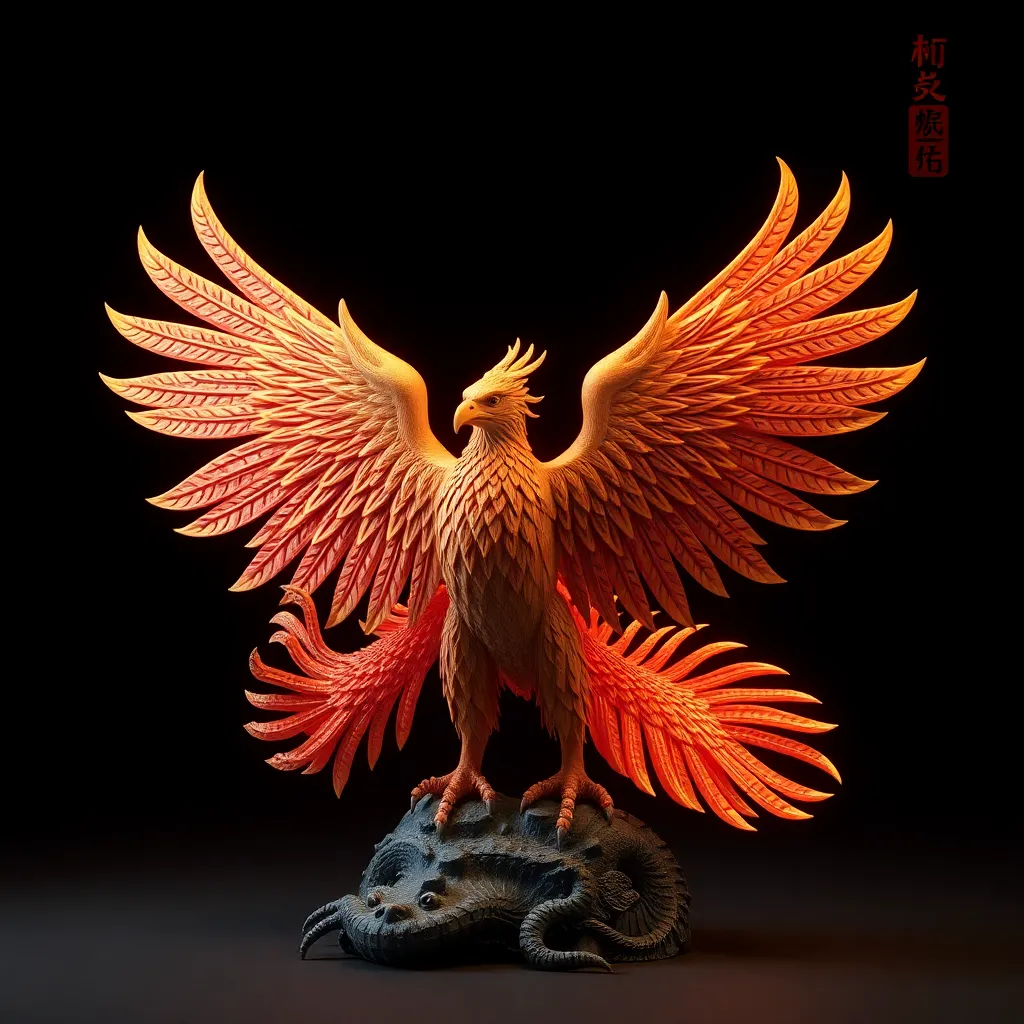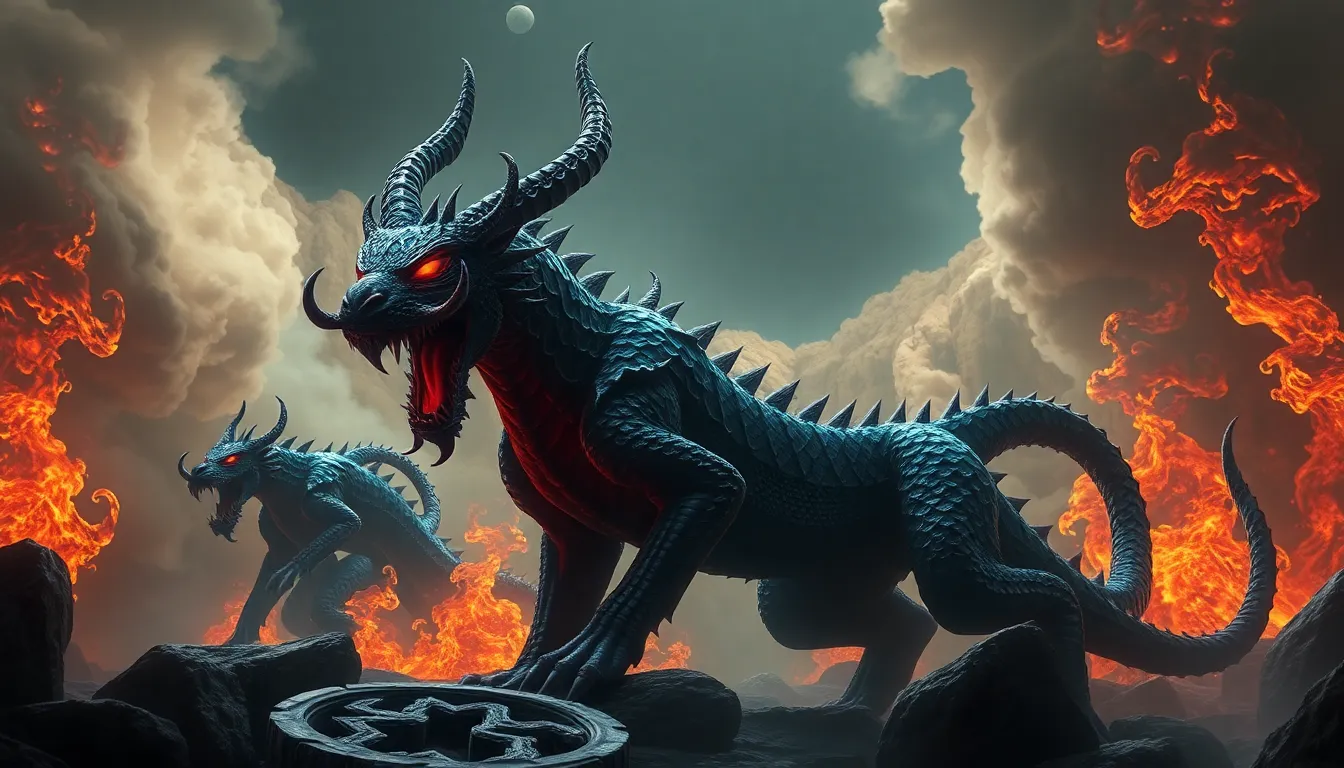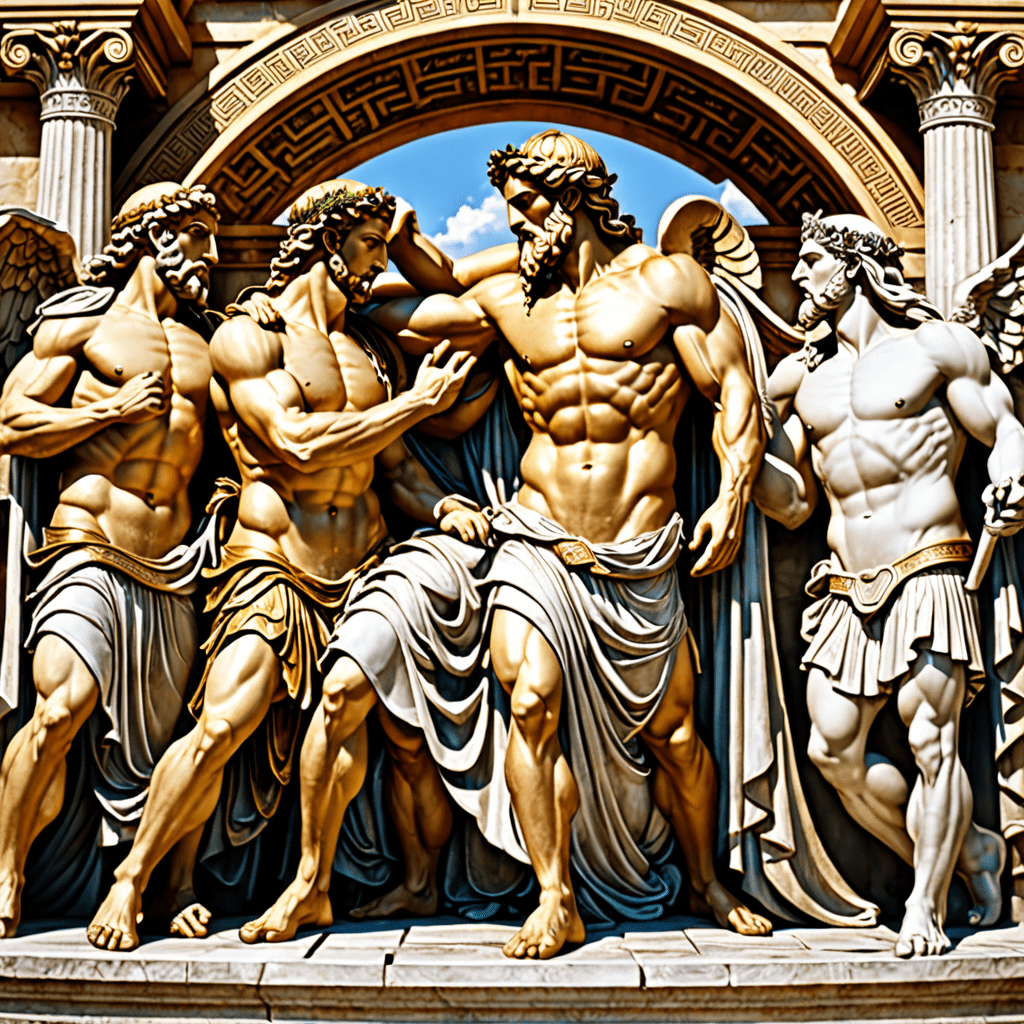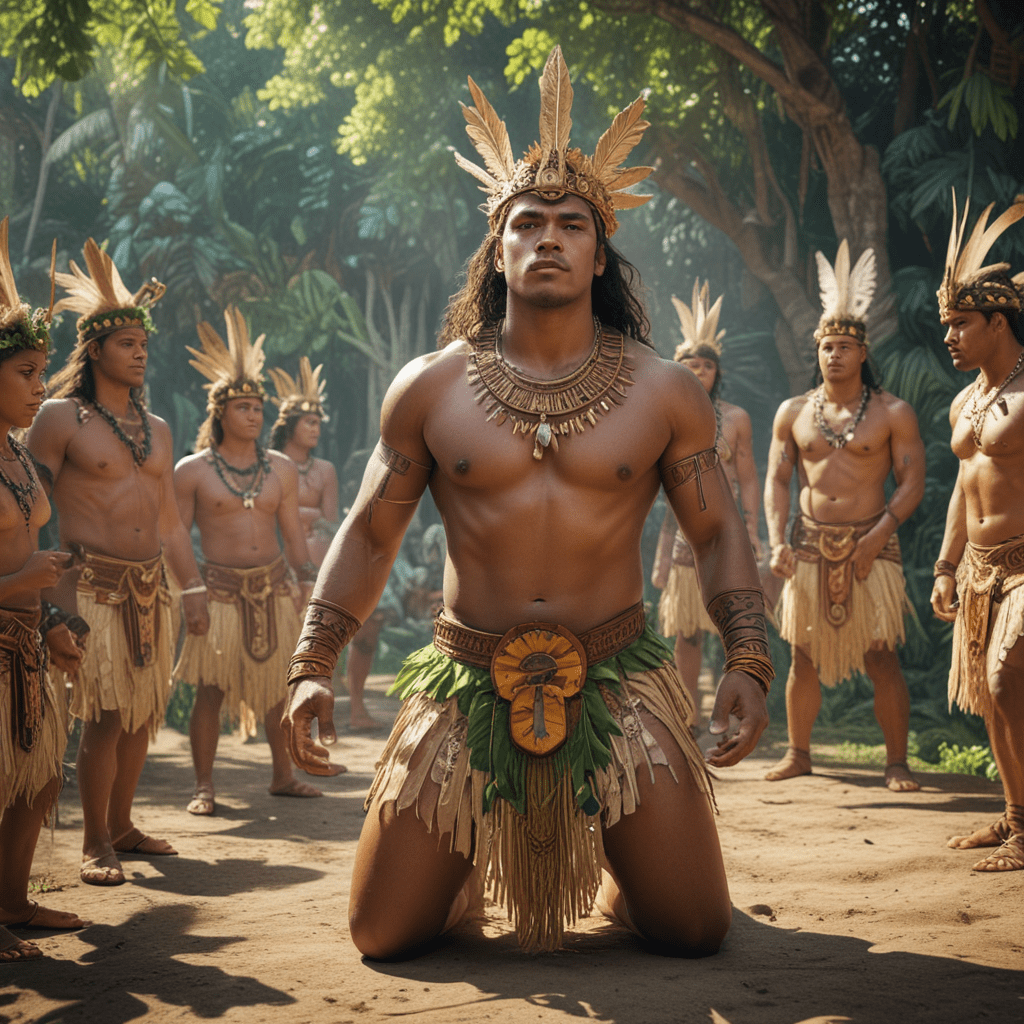The Eagle and the Dragon: Exploring the Cultural Exchange Between Garuda and Chinese Mythological Creatures
I. Introduction
The rich tapestry of mythology across different cultures offers profound insights into the values, beliefs, and traditions of societies. In this exploration, we delve into two powerful symbols: Garuda from Hindu and Buddhist traditions, and the Dragon from Chinese mythology. Both creatures hold significant places in their respective cultures, embodying ideals of power, protection, and transformation.
Garuda, often depicted as a large, eagle-like being, represents strength and speed, serving as the mount of Lord Vishnu in Hinduism and a revered figure in Buddhism. Conversely, the Dragon in Chinese culture symbolizes imperial authority, strength, and auspiciousness, often associated with water and agriculture. This article aims to explore the cultural exchange and symbolism between Garuda and the Dragon, shedding light on their historical contexts, shared themes, and modern interpretations.
II. Historical Context of Garuda and the Dragon
A. Origins of Garuda in ancient texts and scriptures
Garuda’s origins can be traced back to ancient Hindu texts, particularly the Vedas and the Puranas. He is often described as the son of the sage Kashyapa and Vinata, a celestial bird whose power is unmatched. In these texts, Garuda’s fierce devotion to Vishnu and his role as a protector of dharma (cosmic order) are emphasized.
B. Emergence of the Dragon in Chinese mythology
The Dragon has been a central figure in Chinese mythology for centuries. Its earliest depictions date back to the Neolithic period, where it was viewed as a totemic creature. Over time, the Dragon evolved into a symbol of power and authority, particularly during the imperial era, where emperors claimed descent from dragons to legitimize their rule.
C. Historical interactions between Indian and Chinese cultures
The historical interactions between Indian and Chinese cultures can be traced back to trade routes, the spread of Buddhism, and the exchange of ideas. The Silk Road facilitated the movement of goods, but it also served as a conduit for cultural exchange, influencing art, religion, and mythology in both regions.
III. Symbolism of Garuda
A. Garuda as a symbol of power, protection, and speed
Garuda symbolizes immense power and speed. In Hindu mythology, he is often depicted as a protector, fighting against evil forces and safeguarding the divine. His ability to fly at incredible speeds is symbolic of the rapid movement of divine energy.
B. Role of Garuda in various mythological narratives
Garuda plays a pivotal role in various narratives, such as the epic Ramayana, where he aids Lord Rama in his quest to rescue Sita. His battles against serpents and demons further solidify his position as a fierce protector of dharma.
C. Garuda’s depiction in art and literature
Garuda’s image is prevalent in Indian art, often depicted in sculptures, paintings, and textiles. His portrayal varies from majestic and fierce to benevolent, reflecting his complex personality in different narratives.
IV. Significance of the Dragon in Chinese Culture
A. The Dragon as a symbol of imperial authority and strength
The Dragon is emblematic of imperial power in Chinese culture. It represents the emperor’s authority and is often depicted on imperial robes, buildings, and artifacts. The association of the Dragon with power is deeply rooted in Chinese history.
B. Cultural representations of the Dragon in festivals and folklore
Dragons play a vital role in Chinese festivals, particularly during the Lunar New Year, where dragon dances are performed to usher in good fortune. Folklore is rich with stories of dragons, often portraying them as wise and benevolent beings that bring prosperity and rain.
C. The Dragon’s association with water and agriculture
In Chinese mythology, the Dragon is closely linked to water, believed to control rivers and rainfall. This association underscores the Dragon’s importance in agriculture, as water is essential for crop growth and sustenance.
V. Points of Intersection: Garuda and the Dragon
A. Comparative analysis of the traits and characteristics of both creatures
While Garuda and the Dragon originate from different mythological backgrounds, they share several traits:
- Both are depicted as powerful beings associated with the sky.
- Each creature plays a protective role, safeguarding the cosmic order.
- Both have the ability to transform and are often linked with redemption narratives.
B. Shared themes of transformation and redemption
Transformation is a recurring theme in both mythologies. Garuda’s journey from a mere bird to a powerful protector mirrors the transformative journeys often seen in dragon myths, where dragons undergo significant changes, symbolizing growth and redemption.
C. Instances of cultural exchange in art and literature
The cultural exchange between India and China has led to instances where Garuda and Dragon imagery intertwine in art and literature. For example, Buddhist art often depicts Garuda alongside dragons, showcasing the blending of mythologies.
VI. Modern Interpretations and Representations
A. Contemporary depictions of Garuda and the Dragon in popular culture
In contemporary culture, both Garuda and the Dragon have found their place in films, literature, and video games. They are often portrayed as symbols of strength and courage, appealing to modern audiences.
B. Influence of globalization on the perception of these mythological figures
Globalization has facilitated the sharing of cultural narratives, leading to a broader understanding of Garuda and the Dragon. As these figures appear in international media, their stories adapt, reflecting contemporary values and struggles.
C. Fusion of cultural elements in modern storytelling
Modern storytelling often fuses elements from various cultures, leading to unique interpretations of Garuda and the Dragon. This fusion not only enriches narratives but also fosters a sense of global unity through shared mythological themes.
VII. The Impact of Cultural Exchange on Identity
A. How the exchange between Garuda and the Dragon influences national identities
The interaction between Indian and Chinese mythologies has influenced national identities, with Garuda symbolizing India’s spiritual heritage and the Dragon representing China’s imperial past. These symbols contribute to a broader understanding of cultural identity.
B. The role of mythology in shaping cultural narratives
Mythology plays a crucial role in shaping the narratives of cultures. Both Garuda and the Dragon embody ideals that resonate with the values and aspirations of their respective societies, influencing contemporary cultural expressions.
C. Reflection on modern society’s connection to ancient mythologies
In modern society, the connection to ancient mythologies remains strong. As people seek to understand their roots and cultural heritage, figures like Garuda and the Dragon serve as reminders of the rich histories that shape identities today.
VIII. Conclusion
In summary, the exploration of Garuda and the Dragon reveals key insights into the cultural exchanges between Indian and Chinese mythologies. Both creatures symbolize power, protection, and transformation, serving as vessels of cultural identity and heritage. Understanding these mythological figures fosters appreciation for the diverse traditions that enrich our globalized world.
As we continue to navigate a world interconnected through culture and history, it is essential to respect and appreciate the unique stories that each tradition brings, encouraging a dialogue that celebrates diversity and shared human experiences.



